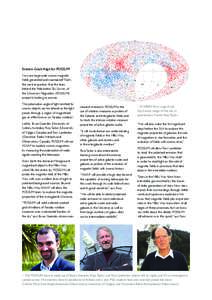 Date: 2014-09-16 22:38:04Radio telescopes Square Kilometre Array Astronomy Australian Square Kilometre Array Pathfinder CSIRO Mid West Bryan Gaensler Galaxy Milky Way | |  Science Goals Align for POSSUM How are large-scale cosmic magnetic fields generated and maintained? That’s the central question that the team behind the Polarization Sky Survey of the Universe’s Magnetism (POSSUM) Science Goals Align for POSSUM How are large-scale cosmic magnetic fields generated and maintained? That’s the central question that the team behind the Polarization Sky Survey of the Universe’s Magnetism (POSSUM)
Add to Reading ListSource URL: dunlap.utoronto.caDownload Document from Source Website File Size: 1,75 MBShare Document on Facebook
|

